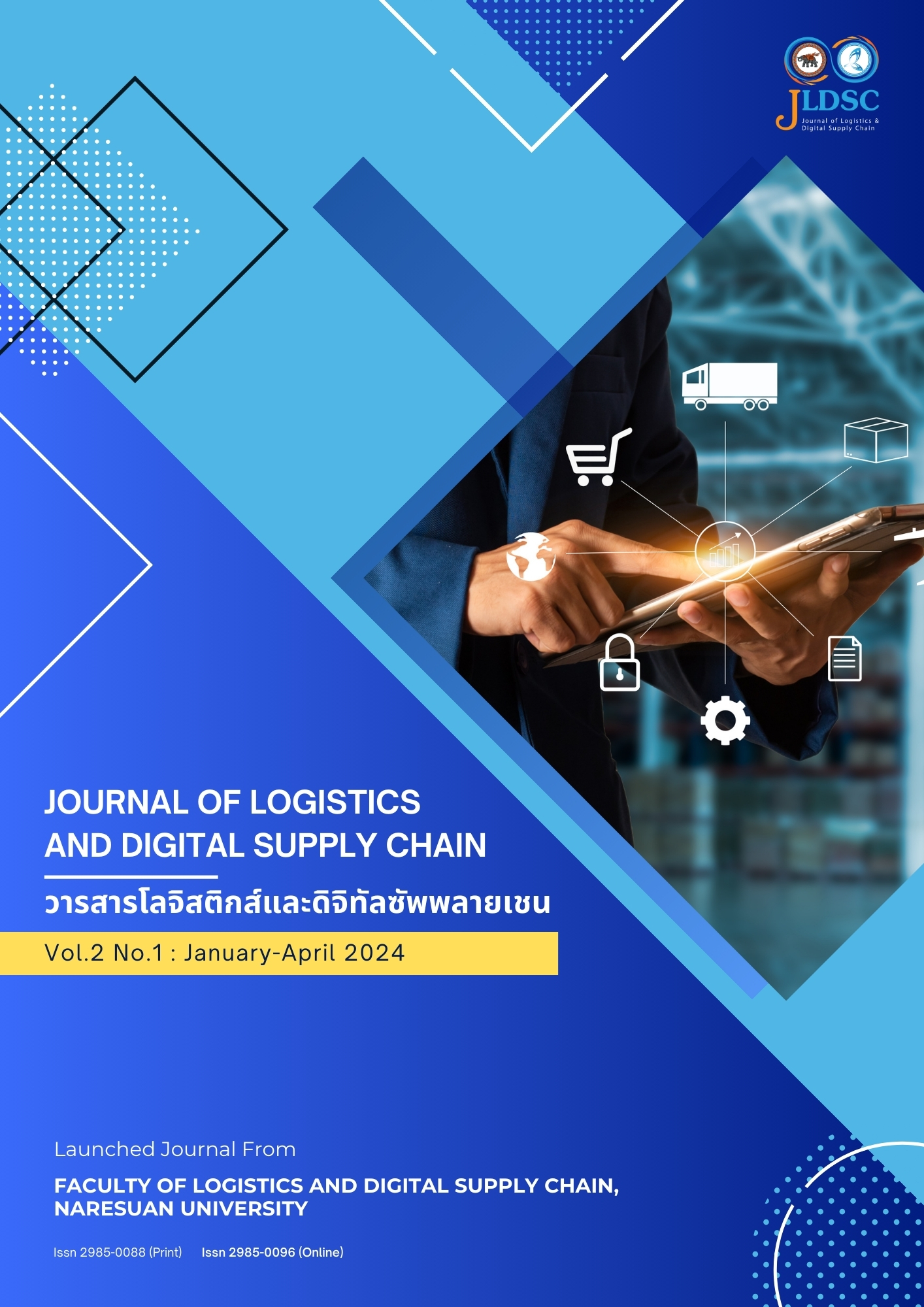A framework for identifying barriers to implementing Alternative Project Delivery Methods (APDM) in public construction of Bhutan
Main Article Content
บทคัดย่อ
Alternative Project Delivery Methods (APDM) have become increasingly popular in recent years for private and public construction projects as viable alternatives to the Design Bid and Build (DBB) method. Organizations opt for APDM to enhance innovation, streamline delivery, share risk, integrate experts, and save cost, thereby promoting economy and efficiency. However, despite the benefits of the APDM, the implementation is still low in many countries, including Bhutan due to various barriers. These barriers are complex and interrelated, with each barrier influencing and being dependent on the other. To address these issues, it is crucial to identify, prioritize, and analyze the interrelationships among these barriers. The study aims to identify and provide a structured framework for elucidating these barriers, utilizing Interpretive Structure Modeling (ISM) and Matrix Multiplication Applied to Classification (MICMAC) analysis to demonstrate their hierarchy and classification. By leveraging the ISM and MICMAC analysis, this framework seeks to expedite and systematize overcoming the barriers to implementing APDM in the public construction sector. It intends to raise awareness and inform decision-makers about the barriers that have the most significant impact, enabling them to focus their mitigation efforts effectively. This paper fills the research gap by presenting a framework to illuminate barriers in the implementation of APDM, with a numerical example illustrating the results.
Article Details

อนุญาตภายใต้เงื่อนไข Creative Commons Attribution-NonCommercial-NoDerivatives 4.0 International License.
เอกสารอ้างอิง
AbouDargham, S., Bou Hatoum, M., Tohme, M., & Hamzeh, F. (2019). Implementation of integrated project delivery in Lebanon: Overcoming the challenges. Pasquire C. and Hamzeh F.R. (ed). In Proceedings of the 27th Annual Conference of the International (917-928). Dublin : Ireland.
Adnan, H., Bachik, F., Supardi, A., & Marhani, M. A. (2011). Success factor of design and Build project in public university. Procedia - Social and Behavioral Sciences, 35, 170-179.
Agarwal, N., & Seth, N. (2021). Analysis of supply chain resilience barriers in Indian automotive company using total interpretive structural modelling. Journal of Advances in Management Research, 18(5), 758-781.
Ahmad, M., Tang, X.-W., Qiu, J.-N., & Ahmad, F. (2019). Interpretive structural modeling and MICMAC analysis for identifying and benchmarking significant factors of seismic soil liquefaction. Applied Sciences, 9(2), 233.
Al Khalil, M. I. (2002). Selecting the appropriate project delivery method using AHP. International journal of project management, 20(6), 469-474.
Aldossari, K. M. A. (2020). Organizational Change Management for the Adoption of Alternative Project Delivery Methods within the AEC Industry. Arizona : Arizona State University.
Attri, R., Dev, N., & Sharma, V. (2013). Interpretive structural modelling (ISM) approach: an overview. Research journal of management sciences, 2319(2), 1171.
Beikkhakhian, Y., Javanmardi, M., Karbasian, M., & Khayambashi, B. (2015). The application of ISM model in evaluating agile suppliers selection criteria and ranking suppliers using fuzzy TOPSIS-AHP methods. Expert systems with Applications, 42(15-16), 6224-6236.
CDB. (2020). Annual Report 2029-2020 Construction Development Board. Bhutan : RGoB.
Chandramowli, S., Transue, M., & Felder, F. A. (2011). Analysis of barriers to development in landfill communities using interpretive structural modeling. Habitat International, 35(2), 246-253.
Choden, Y. T. S. W. R., & Lhendup, T. (2020). Factors Affecting Time Overrun in Construction Projects in Bhutan. Journal of Education and Practice, 11, 1-7.
Davis, R. P., Love, P., & Baccarini, D. (2008). Building Procurement Methods. Australia : Net Pty.
Gibson Jr, G. E., & Walewski, J. (2001). Project delivery methods and contracting approaches: Assessment and design-build implementation guidance. (Research Report). United State : The University of Texas At Austin.
Gisev, N., Bell, J. S., & Chen, T. F. (2013). Interrater agreement and interrater reliability: key concepts, approaches, and applications. Research in Social and Administrative Pharmacy, 9(3), 330-338.
Guo, Z., Cahalane, M., & Carbonie, A. (2020). Pursuit of happiness through Esports: an interpretive structural approach. PACIS 2020 Proceedings. 199.
Kalach, M. (2020). Alternative Project Delivery Methods: Design Dynamics and Implications.(Thesis of Doctor of Philosophy Department of Civil and Environmental Engineering). Department of Civil and Environmental Engineering : American University of Beirut.
Kumar, P., Bhamu, J., & Sangwan, K. S. (2021). Analysis of barriers to Industry 4.0 adoption in manufacturing organizations: An ISM approach. Procedia CIRP, 98, 85-90.
Lawshe, C. H. (1975). A quantitative approach to content validity. Personnel psychology, 28(4), 563-575.
Lohana, Y. K. (2021). ISM and MICMAC Model for Construction Delay. International Research Journal of Engineering and Technology, 8(1), 1382-1391.
Ma, Q., Li, S., Teo, P. X., & Ling, F. Y. Y. (2022). Barriers to adopting integrated project delivery practices. Engineering, Construction and Architectural Management, 30(9), 4171-4191.
Manjunatheshwara, K., & Vinodh, S. (2018). Application of TISM and MICMAC for analysis of influential factors of sustainable development of tablet devices: a case study. International Journal of Sustainable Engineering, 11(5), 353-364.
Moelyanto, M., Marsetio, M., Octavian, A., Bura, R., & Putra, I. (2021). Integrated interpretive structural modeling (ISM) and MICMAC diagram for analysis of infrastructure influence in supporting submarine operations. Engineering and Applied Science Letters, 4(3), 8-18.
Mosissa, L. (2006). Alternative Project Delivery methods for Public Construction: case in Oromia Region.
Walewski, J., Gibson Jr, G. E., & Jasper, J. (2001). Project delivery methods and contracting approaches available for implementation by the Texas Department of Transportation. Texas : University of Texas at Austin. Center for Transportation Research.
Warfield, J. N., & Cárdenas, A. R. (1994). A handbook of interactive management. United Sta tes of America : Iowa State University Press Ames.
Yadav, D. K., & Barve, A. (2015). Analysis of critical success factors of humanitarian supply chain: An application of Interpretive Structural Modeling. International journal of disaster risk reduction, 12, 213-225.


